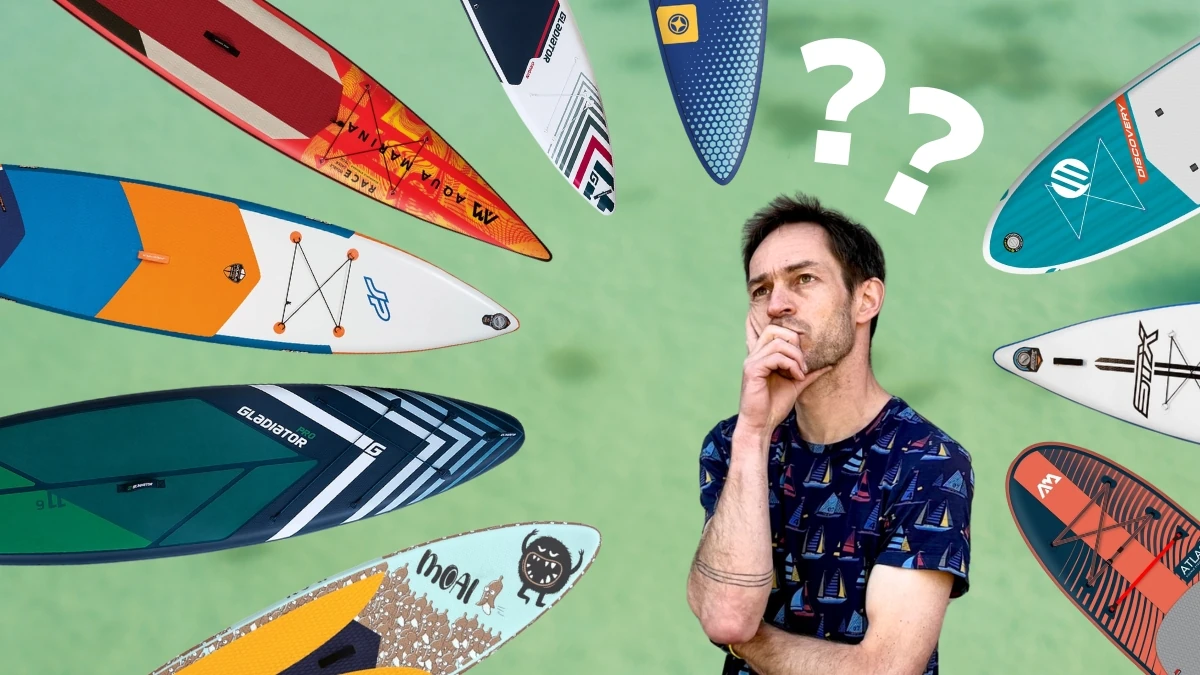Selecting the right SUP board (Stand Up Paddleboard) is one of the most important decisions at the start of your paddleboarding journey – and not only at the start. Even experienced users who want to switch to something faster, more stable, or better suited to their specific style must consider several key factors.
A SUP board should match your real needs: where you plan to paddle, how you intend to use it, and what performance you expect. What works perfectly on a calm lake may not necessarily be the best choice for long-distance tours or dynamic paddling on waves.
In this guide, we’ll walk you through all the most important aspects of choosing a SUP board – without unnecessary simplifications and marketing exaggerations. Practical, clear, and specific.
Before You Choose: A Quick Checklist
Before diving into specific models and types, it’s helpful to answer a few straightforward yet crucial questions. This will make it easier to determine what you truly need.
Where Will You Paddle Most Often?
Calm lakes or bays: A wider, stable all-round or touring board is ideal.
Rivers with gentle currents: Opt for a compact, stable board with good maneuverability.
Sea, ocean, or waves: Consider a surf-specific board or a downwind model.
How Do You Plan to Use Your Board?
Leisurely paddling and relaxation: A comfortable, stable all-round board.
Long-distance trips and excursions: A touring board designed for extended paddling.
Fitness activities (e.g., yoga): A board with increased width and stability.
Speed or racing: A narrow, fast, and demanding race board.
Combining SUP and windsurfing: A windSUP model with a sail mount.
What Weight Will the Board Need to Support?
Your weight, plus any additional gear, affects the necessary board volume. A board that’s too small will be unstable and may sink under your weight; one that’s too large can be hard to control.
Quick rule of thumb:
User weight × 3 = comfort board volume in liters.
For example, someone weighing 80 kg should look for a board with a volume of at least 240 liters.
How Important Are Transport and Storage?
Need to transport the board in a car trunk: Choose an inflatable model.
Have storage space and prioritize performance: Consider a hardboard.
Types of SUP Boards – Which One Is Right for You?
Selecting the appropriate SUP board type is a crucial step. Different models are designed for various purposes, shapes, and characteristics that affect stability, speed, and paddling comfort.
Below is an overview of the most popular SUP board types, along with brief explanations of their best uses.
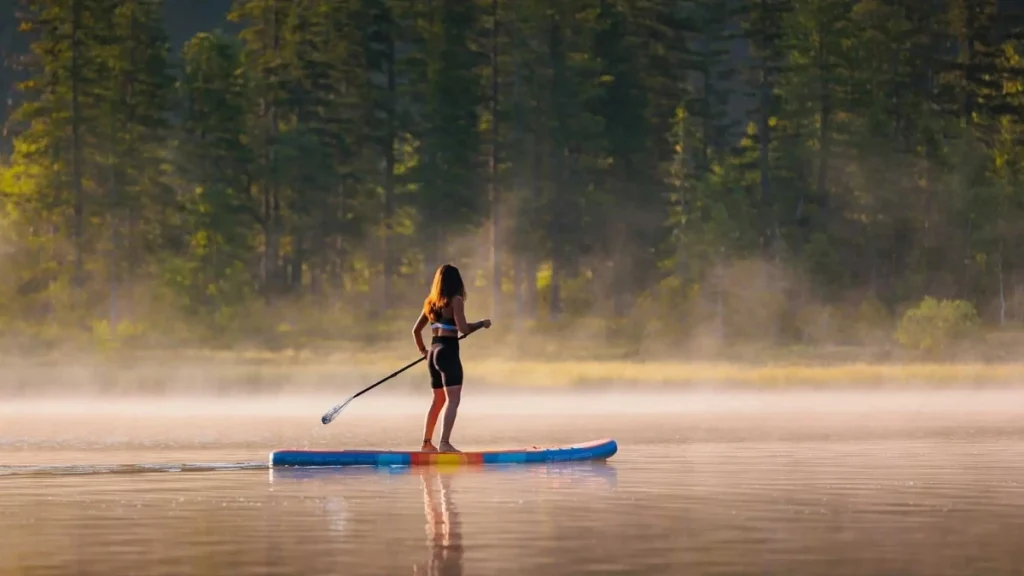
Allround – Versatility for Beginners and Beyond
Allround boards are the most versatile models on the market. They feature a rounded nose and stable construction, making them easy to handle. Suitable for calm lakes and slightly choppy seas, they’re an excellent choice for those seeking a board for various activities without specializing in a particular paddling style.
Ideal for:
Individuals looking for a multipurpose recreational board.
Those who haven’t yet defined their paddling style.
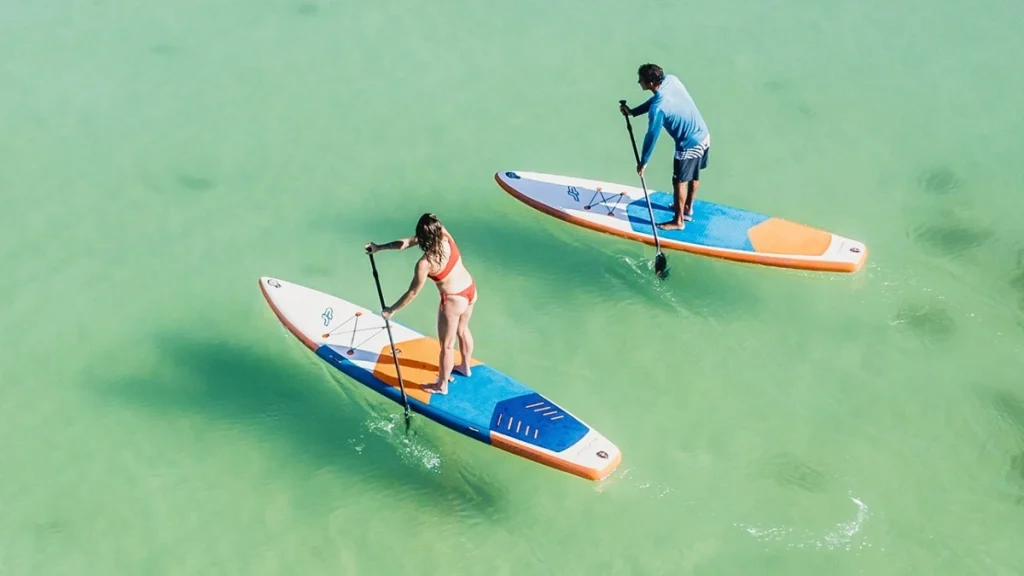
Touring – For Long Distances and Excursions
Touring boards are longer and often narrower than all-round models, with a more pointed nose that enhances tracking and increases speed with less effort. They’re perfect for extended trips on lakes, rivers, or along coastlines.
Ideal for:
Paddlers planning longer journeys and seeking efficiency.
Those who value straight-line tracking and speed.
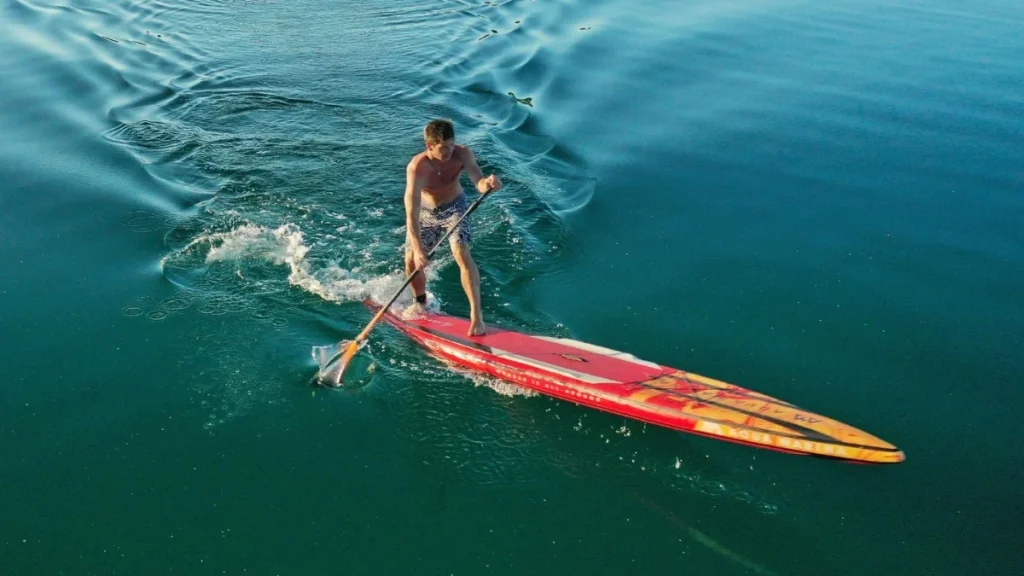
Race – Speed and Competitive Spirit
Race boards are long, narrow, and built for maximum speed. They require greater balance skills and precise paddle technique. This type of board is designed for those who love competition or simply want to paddle faster.
Who is it for?
For paddlers with a performance-focused approach to SUP.
For those seeking a board for racing or intensive training sessions.
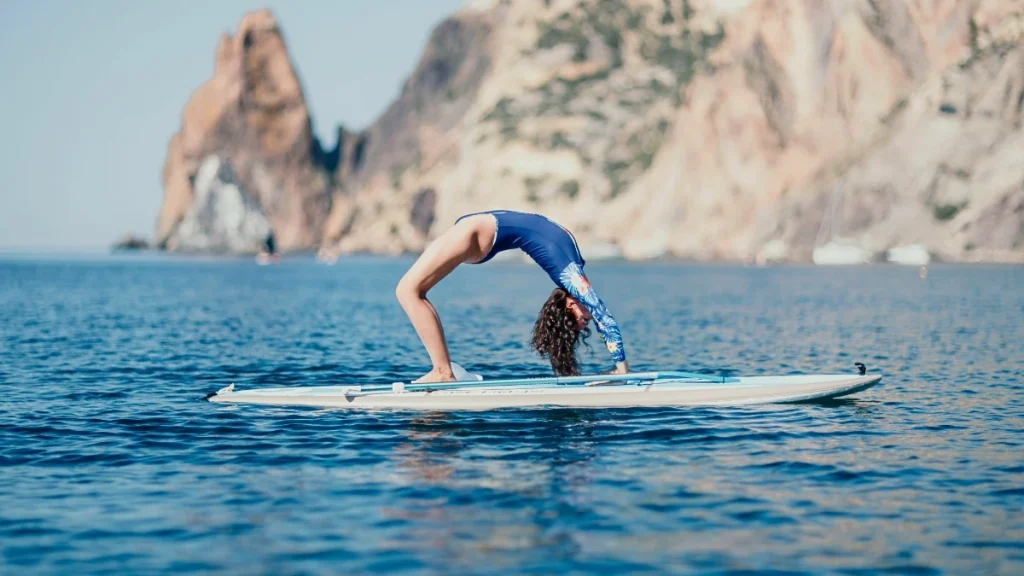
Yoga – Stability for Body and Mind
SUP yoga boards are wider and more stable than standard models. They often feature a larger deck area covered with non-slip EVA foam, enhancing comfort during workouts. These boards allow you to combine physical exercise with outdoor relaxation.
Who is it for?
For those practicing yoga or fitness on the water.
For anyone looking for a stable platform for exercising afloat.
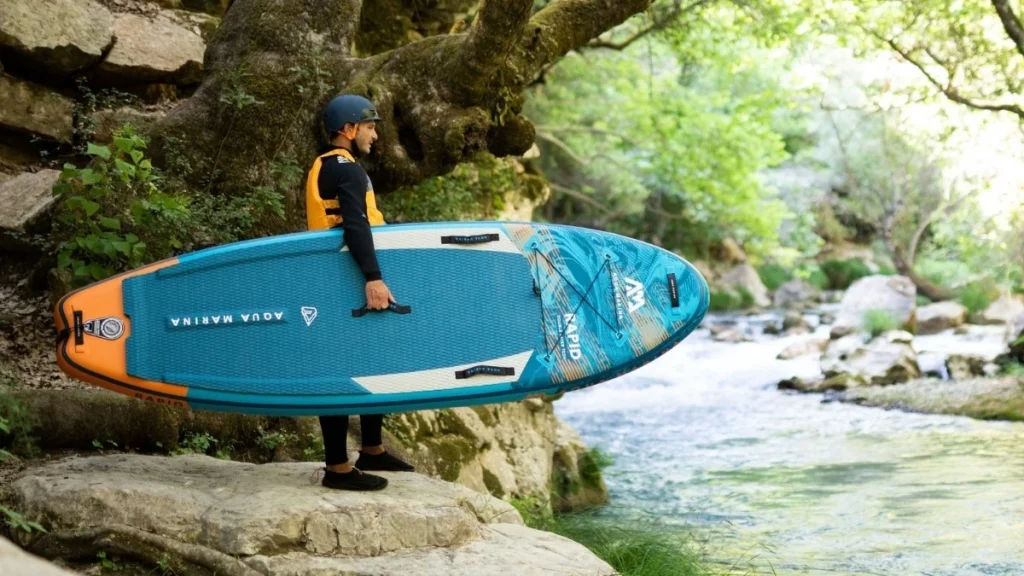
River/Whitewater – Boards for Currents and Rapids
SUPs designed for river and whitewater use are shorter, wider, and highly maneuverable. They feature reinforced construction to withstand impacts from rocks or underwater obstacles.
Who is it for?
For adventure seekers navigating rivers with changing currents.
For those needing a durable board for challenging conditions.
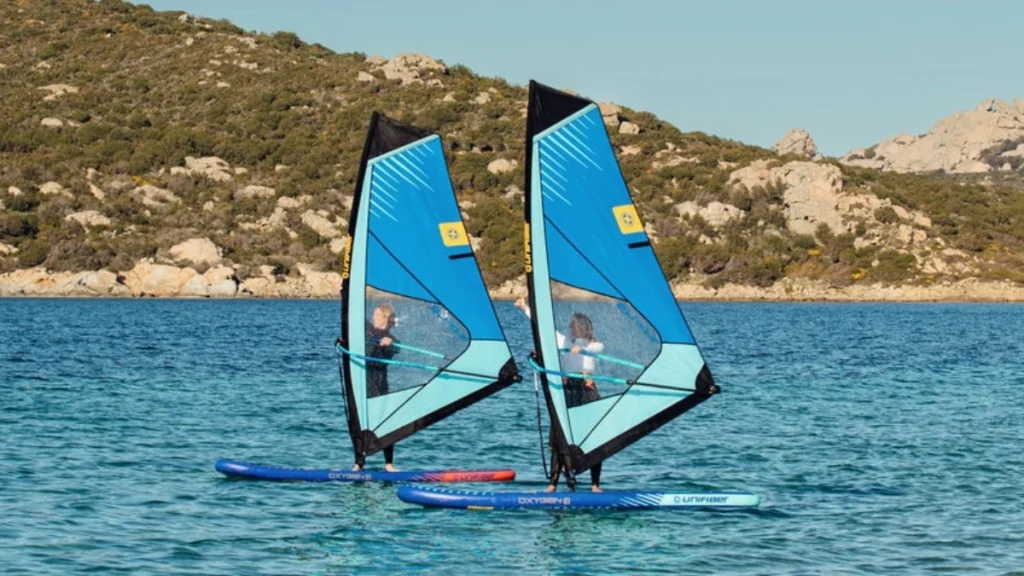
WindSUP – The Best of Both Worlds: SUP and Windsurfing
A WindSUP is a paddleboard equipped with a windsurf sail mount. It lets you paddle on calm days and sail when the wind picks up—offering true multi-functionality.
Who is it for?
For people who want to combine paddleboarding with recreational windsurfing.
For families looking for a versatile holiday board.
Downwind – For Long Distances with the Wind
Downwind boards are long and specially shaped to ride ocean swells created by wind. This is a niche category, suitable for experienced riders who can handle complex conditions.
Who is it for?
For advanced paddlers planning ocean or sea downwind expeditions.
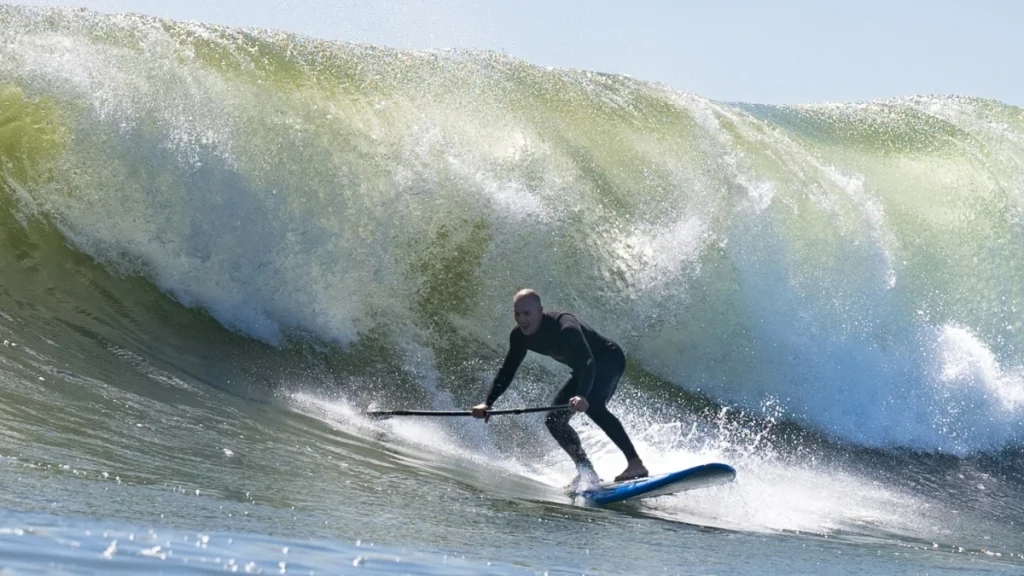
Surf SUP – Boards for Catching Waves
Surf SUPs are shorter and more responsive, designed specifically for wave riding. They allow for quick turns and maneuvers similar to traditional surfboards.
Who is it for?
For those who want to surf waves using a paddle.
For users looking for maximum agility in small to medium surf.
What Affects a SUP Board’s Performance on the Water?
Your experience on a SUP board is largely shaped by its technical specifications. The length, width, thickness, and volume of the board determine how easy it is to balance, how fast it glides, and how responsive it is to maneuvers. In this section, we break down how each of these elements influences performance on the water.
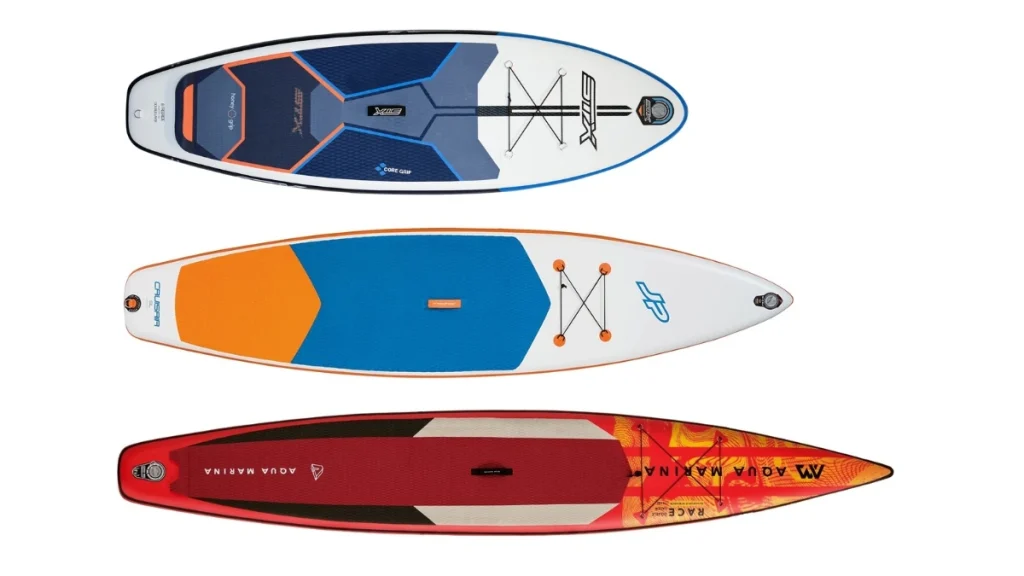
Length – Impact on Speed and Tracking
Length is one of the most important parameters defining a board’s characteristics.
Longer boards (11’–12’+):
- Better tracking – they glide in a straight line.
- Higher cruising speed with less effort.
- Less maneuverable – harder to turn quickly.
Shorter boards (under 10’6”):
- Easier to turn and control.
- Slower over long distances.
- More susceptible to drifting in crosswinds.
In practice:
If you’re planning long-distance paddling, go for a longer board. For playful paddling or maneuverability (e.g., rivers, near the beach), a shorter board is better.
Width – Stability vs. Performance
The board’s width directly affects how easy it is to maintain balance.
Wider boards (32″–35″):
- Greater stability, even for beginners or in tough conditions (e.g., wind, waves).
- Lower speed due to increased drag.
Narrower boards (26″–30″):
- Better hydrodynamics and performance.
- Require more control and balance.
In practice:
Wide = comfort and ease.
Narrow = speed and sportiness, but more challenging.
Thickness – Stiffness and Comfort
Thickness primarily matters for inflatable models.
Thicker boards (6″ / ~15 cm):
- More stiffness = better comfort.
- Higher buoyancy – suitable for heavier paddlers.
Thinner boards (4–5″ / ~10–12 cm):
- Lower profile, more “surfy” feel.
- Less stiffness under heavier load.
In practice:
If you weigh 70–80 kg or more, or plan long trips – go for a thicker board (6”). For kids, lightweight users, or surf-specific use, thinner models may be a better fit.
Volume (Liters) – Buoyancy vs. Real-World Use
Volume, measured in liters, indicates how much water the board can displace – in other words, how much weight it can safely support.
General rule:
Your weight × 1.5–2 = minimum board volume.
Example:
80 kg paddler → choose a board with at least 120–160 liters of volume.
Important notes:
Higher volume = greater stability, but harder maneuvering in challenging conditions (like waves).
Too little volume = the board sinks, becomes unstable, and difficult to control.
Board Outline – Stability, Agility, and Acceleration
The board’s outline – how its width changes from nose to tail – affects handling and on-water behavior.
Wide middle with tapered nose and tail – typical for all-round and touring boards. Provides strong central stability with good acceleration and smooth turns.
Uniform outline (wide throughout) – found in yoga and surf SUPs. Maximizes lateral stability but sacrifices hydrodynamics and speed.
In practice:
For learning and forgiving balance, look for a wider profile. For better performance and speed, choose a board with a narrower nose and tail.
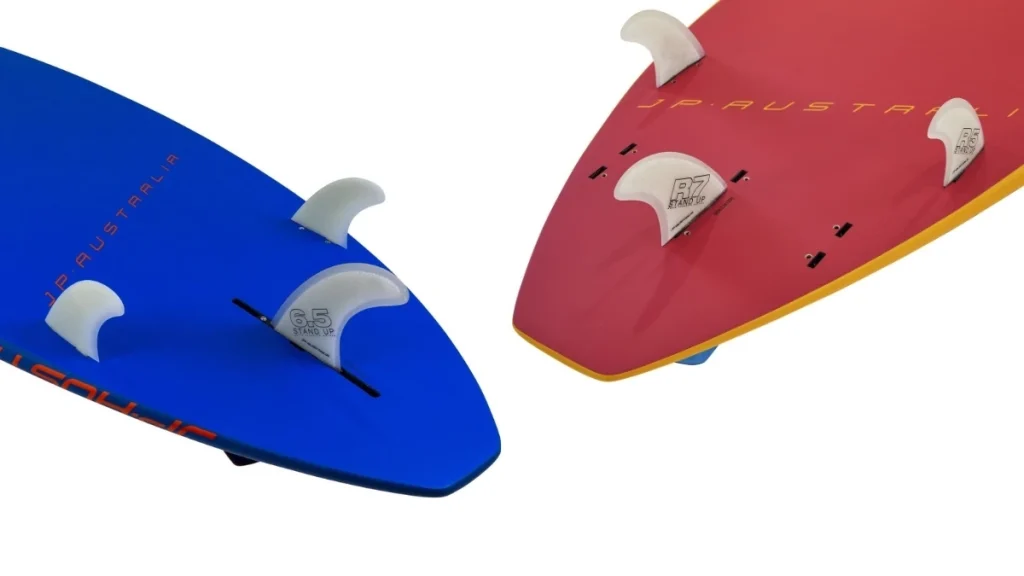
Fins and Setup – Directional Stability and Maneuverability
Fins play a major role in how well the board tracks and turns.
Single large fin – excellent straight-line tracking, common in touring and race boards.
2+1 setup (one main fin and two smaller side fins) – versatile combo, balances stability and agility. Popular in all-round boards.
Thruster (three small fins) – common in surf SUPs; great for sharp turns and wave precision.
In practice:
For long, straight paddling on flat water, go with a single fin. For varied conditions, a 2+1 setup offers more versatility.
Bottom Shape – How It Affects On-Water Performance
The bottom shape significantly influences how the board handles.
Flat bottom – very stable, ideal for beginners and all-round boards. Helps with balance and comfort on calm water.
V-hull – better tracking and water flow efficiency. Found in touring and race boards.
Rocker (raised nose) – helps with handling waves and river obstacles. More rocker = better maneuverability in rough water, but slower on flat water.
In practice:
Flat bottoms are better for stability on flat water. V-hulls and pronounced rockers excel in dynamic or long-distance conditions.
How These Factors Work Together
In reality, SUP board parameters don’t act in isolation. How a board performs depends on the combination of its length, width, thickness, and volume.
Some examples of synergy:
Long and narrow → fast but unstable (typical race boards).
Short and wide → stable but slower (ideal for beginners or yoga).
Long and wide → excellent for touring, with great stability.
That’s why it’s important not to judge a board by a single metric. Always consider the full design.
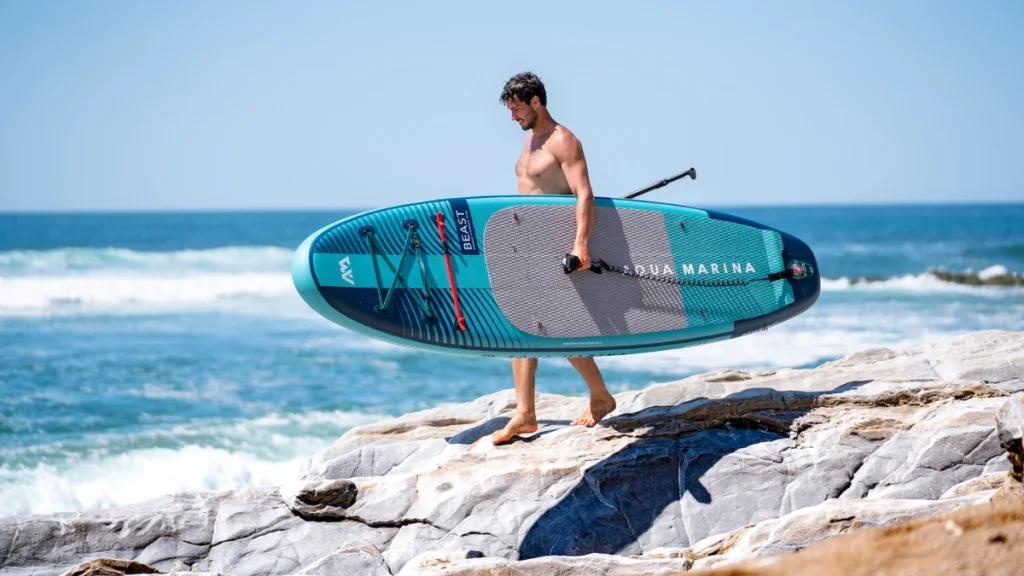
Choose the Right SUP Board for Your Needs
Choosing a SUP board should match not only your skill level but, above all, how you plan to use it. Below are various usage scenarios with the key features to consider when shopping.
Recreational SUP – Calm Lakes, Bays, and Gentle Rivers
If your plan involves leisurely paddling on lakes, reservoirs, or slow rivers, a stable all-round board is your best bet.
What to look for:
Length: approx. 10’6″–11′ – good mix of comfort and stability.
Width: at least 31″–32″ – helps with balance.
Large EVA foam deck for comfort.
2+1 fin setup or single fin for easy control.
Perfect for: relaxing paddles, water picnics, family outings, or casual fitness.
Touring SUP – Long Adventures and Exploration
If you aim to cover longer distances, carry gear, and explore new waters, a touring board is ideal.
What to look for:
Length: 11’6″–14′ – better tracking and speed.
Narrower profile (~30″) for glide efficiency.
High rigidity – especially important for inflatables.
Deck tie-downs for cargo.
Perfect for: long-distance touring, SUP camping, ambitious exploration.
Race SUP – Speed and Competitive Training
If speed, competition, or intense training is your goal, go for a race board.
What to look for:
Length: over 12’6″ – longer glide and faster pace.
Width: 26″–28″ – minimal drag.
Very stiff construction – critical for performance.
Single large fin for tracking.
Perfect for: performance improvement, racing, and endurance training.
Surf SUP – Catching Waves with a Paddle
If you want to surf waves using a paddle, choose a surf-specific SUP.
What to look for:
Short length: 8’–10′
Pronounced rocker (lifted nose) – helps catch and control waves.
Thruster fin setup (three small fins) – maximum maneuverability.
Lower profile for responsiveness.
Perfect for: riding small to medium waves, combining surfing with paddle power.
Yoga/Fitness SUP – On-Water Workouts
If you’re into yoga, fitness, or meditation on the water, go with a yoga SUP.
What to look for:
Wide platform (33″–36″) – ultra-stable.
Flat bottom and even volume distribution.
Large non-slip EVA surface.
Minimal rocker – flat and stable base.
Perfect for: active relaxation, balance training, and floating workouts.
WindSUP – SUP with Windsurfing Option
If you want to both paddle and sail, choose a windSUP board.
What to look for:
Reinforced mast insert.
Stable width (minimum 31″).
Optional removable center fin or daggerboard for sailing performance.
Perfect for: trying both SUP and recreational windsurfing without buying two separate boards.
Construction & Materials – How They Affect Your Ride
When choosing a SUP board, look beyond shape and size. Materials and construction methods directly impact weight, stiffness, durability, and overall comfort. Here’s what to know:
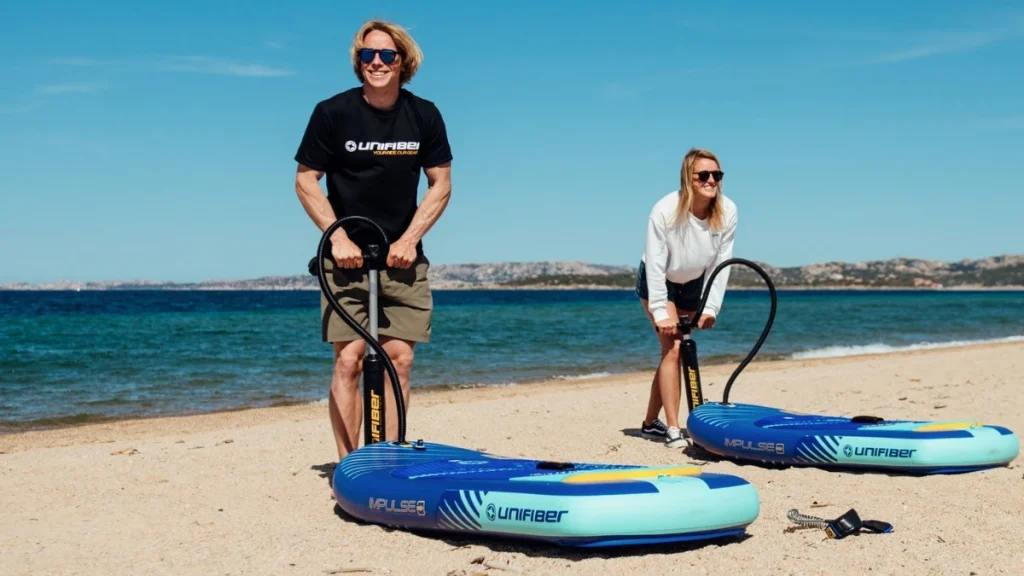
Inflatable SUPs
Made from dropstitch cores with PVC layers that become rigid once inflated.
Pros:
Easy to store and transport – deflates to fit in a backpack.
Impact-resistant (e.g., rocks, docks).
Softer surface = safer in case of falls.
Cons:
Less stiff than hardboards (though premium models come close).
Takes time to inflate and deflate.
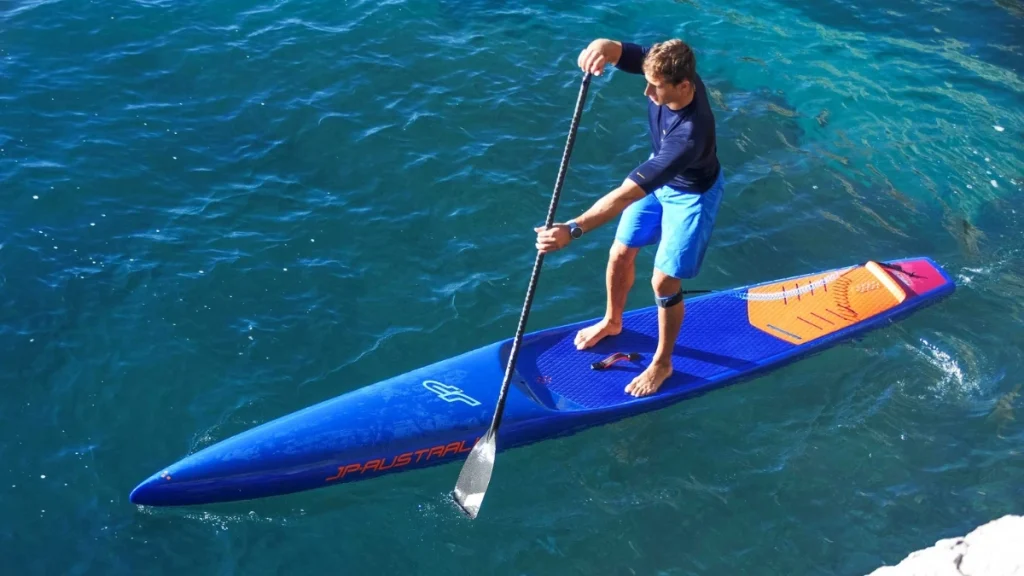
Hardboards (Solid SUPs)
Usually made from EPS foam with epoxy laminate or advanced composites.
Pros:
Greater stiffness and better performance.
More direct water feel.
Ideal for racing and surfing.
Cons:
Harder to transport – requires car racks or large vehicles.
More prone to dings and cracks.
Inflatable SUP Technologies – What to Look For
Single Layer:
One PVC layer + dropstitch core.
Lightweight, budget-friendly.
Less stiff, easier to damage.
Good for occasional use and kids.
Double Layer:
Two laminated PVC layers.
Stiffer and more durable.
Heavier but more robust.
Fusion (MSL, Heat Bonded):
Two layers fused thermally (no glue).
Best stiffness-to-weight balance.
Lighter than classic double layer.
Used in high-end touring and racing boards.
Dropstitch – The Core of Every Inflatable SUP
Thousands of threads connect the board’s top and bottom layers. When inflated to 15–20 PSI, they create a flat, rigid platform.
The denser the weave, the:
Stiffer the board,
More durable it is,
More comfortable the ride.
Common Mistakes When Choosing a SUP Board
1. Choosing a Board Too Small for Your Weight
A board that can’t handle your weight will sink, wobble, and frustrate you.
Tip: Always check the manufacturer’s recommended weight limit. Formula:
your weight × 3 = comfort board volume in liters
2. Picking the Wrong Type for Your Needs
Many people choose a universal all-round board, then complain about poor speed or balance.
Tip: Decide upfront: recreational, touring, racing, or surfing? Match your board to your main purpose.
3. Overlooking Paddle Quality
The paddle is your second most important piece of gear. Cheap aluminum paddles are heavy and tiring.
Tip: If budget allows, get a fiberglass or carbon paddle – lighter, more efficient, and much more enjoyable.
4. Not Considering Transport & Storage
Hardboards take up space and need proper transport. Inflatables also need a good backpack and inflation time.
Tip: Think through your logistics before buying.
5. Believing One Board Does It All
All-round boards are versatile, but no single board is perfect for every condition or style.
Tip: Focus on your current needs. You can always add a second, more specialized board later.
Final Thoughts
The right SUP board is an investment in comfort, safety, and enjoyment. Whether you’re planning serene lake trips, intense workouts, or surf sessions, the right board will elevate your experience.
Don’t focus only on size—consider board type, construction quality, and what fits your real-life paddling plans. If you’re unsure, talk to someone experienced who can help match your board to your lifestyle.
At EASY-surfshop, we’re happy to share our knowledge. Got questions? Reach out anytime.
Use our SUP Gear Selector – we’ll help you find your ideal board.
Explore our full SUP collection and begin your water adventure.

